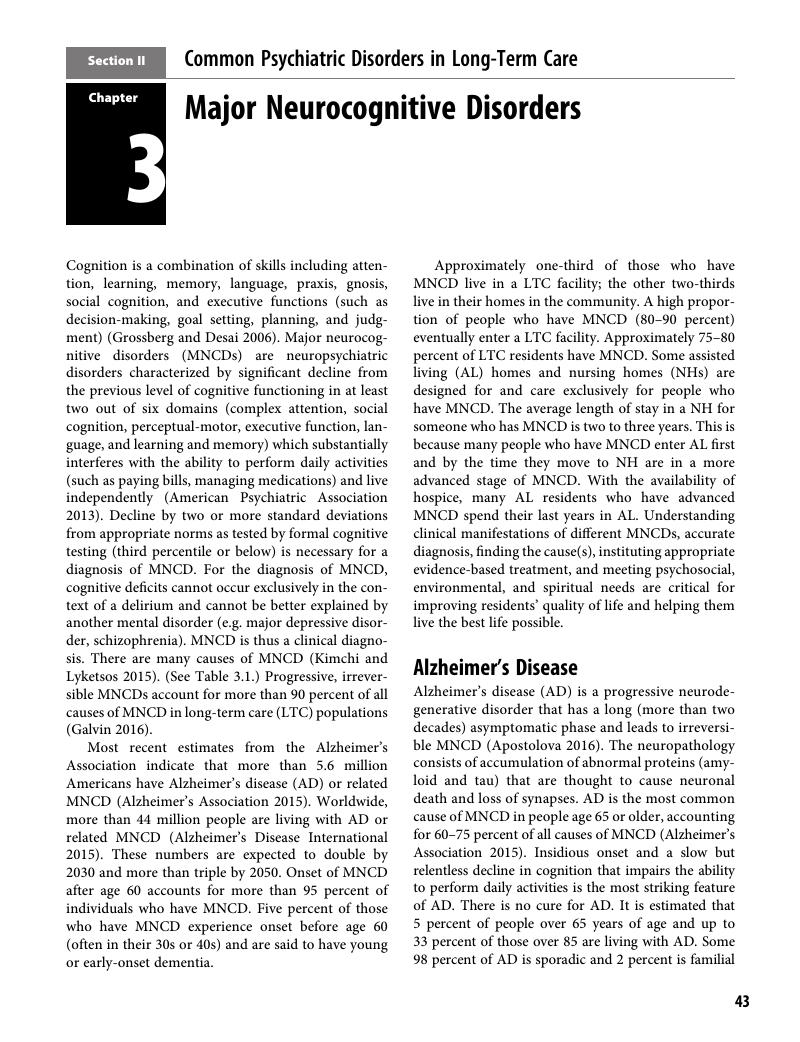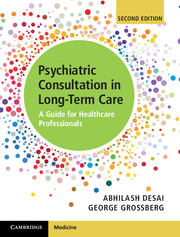Book contents
- Psychiatric Consultation in Long-Term Care
- Psychiatric Consultation in Long-Term Care
- Copyright page
- Contents
- Preface
- Abbreviations
- Commonly Used Psychotropic Drugs
- Section I Comprehensive Mental Health Services
- Section II Common Psychiatric Disorders in Long-Term Care
- Chapter 3 Major Neurocognitive Disorders
- Chapter 4 Delirium
- Chapter 5 Major Depressive Disorder, Other Mood Disorders, and Suicide
- Chapter 6 Psychotic Disorders and Violence
- Chapter 7 Anxiety Disorders, Trauma- and Stress-Related Disorders, Obsessive-Compulsive and Related Disorders, and Sleep-Wake Disorders
- Chapter 8 Personality Disorders, Somatic Symptom and Related Disorders, Substance Use Disorders, and Intermittent Explosive Disorder
- Section III Issues in Long-Term Care Psychiatry
- Section IV Toward a Person-Centered Long-Term Care Community
- Index
- References
Chapter 3 - Major Neurocognitive Disorders
from Section II - Common Psychiatric Disorders in Long-Term Care
Published online by Cambridge University Press: 30 August 2017
- Psychiatric Consultation in Long-Term Care
- Psychiatric Consultation in Long-Term Care
- Copyright page
- Contents
- Preface
- Abbreviations
- Commonly Used Psychotropic Drugs
- Section I Comprehensive Mental Health Services
- Section II Common Psychiatric Disorders in Long-Term Care
- Chapter 3 Major Neurocognitive Disorders
- Chapter 4 Delirium
- Chapter 5 Major Depressive Disorder, Other Mood Disorders, and Suicide
- Chapter 6 Psychotic Disorders and Violence
- Chapter 7 Anxiety Disorders, Trauma- and Stress-Related Disorders, Obsessive-Compulsive and Related Disorders, and Sleep-Wake Disorders
- Chapter 8 Personality Disorders, Somatic Symptom and Related Disorders, Substance Use Disorders, and Intermittent Explosive Disorder
- Section III Issues in Long-Term Care Psychiatry
- Section IV Toward a Person-Centered Long-Term Care Community
- Index
- References
Summary

- Type
- Chapter
- Information
- Psychiatric Consultation in Long-Term CareA Guide for Healthcare Professionals, pp. 43 - 101Publisher: Cambridge University PressPrint publication year: 2017



